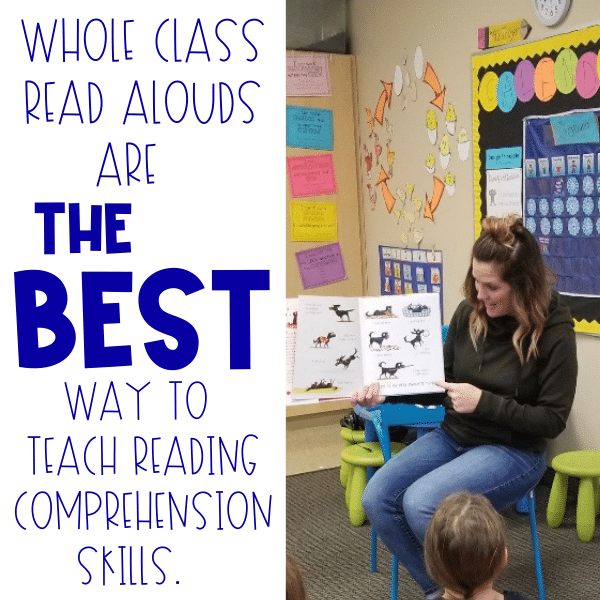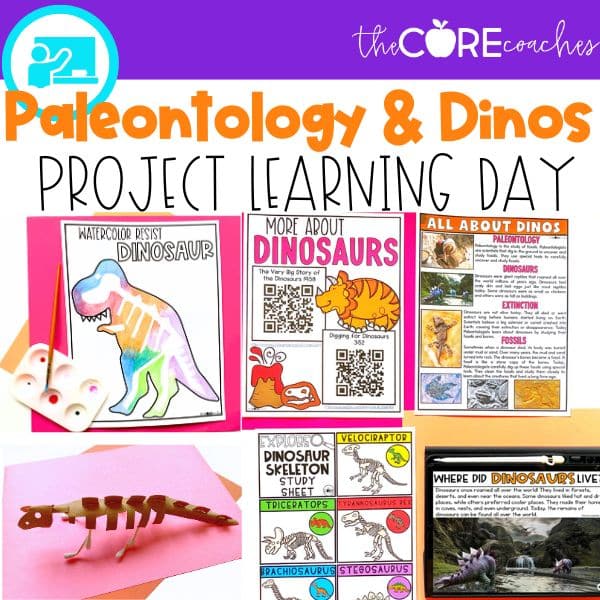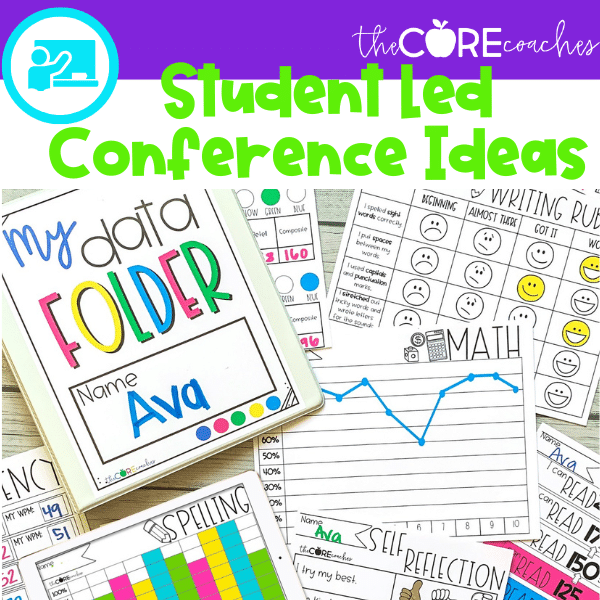One of the greatest rewards as a teacher is when a student GETS it! When you see a student’s eyes light up when it finally “clicks.” When you hear a student’s voice get excited when they FINALLY read a word correctly. These are the moments that make showing up each day worth it. It is an exciting job, and also one that comes with a lot of responsibility.
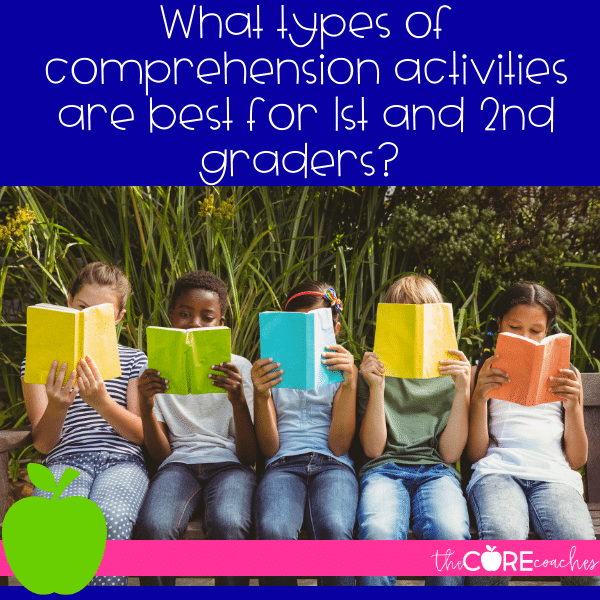
As an elementary school teacher, you have a special job because you are helping students establish strong foundations for learning. Especially as a first or second grade teacher. It’s your job to help students develop essential skills that will help them succeed in years to come. You are the teacher who first assesses each student’s level of understanding as it relates to reading, writing, and listening.
We know this responsibility is exciting and comes with a big reward. However, we also know sometimes it can feel like A LOT! Especially when you have so many students, so many skills to cover, and so little time. You may even wonder sometimes what types of comprehension activities are best for 1st and 2nd graders?
With over 40 years in the classroom between the three of us, and 25 of those years specifically in first and second grade, we are confident in sharing what we believe are the best kinds of comprehension activities for first and second graders. Keep reading to learn about our favorite listening comprehension, reading comprehension activities, and writing comprehension activities. Plus, how learning activities like graphic organizers and text dependent questions are important for comprehension in all grade levels – including first and second grade.
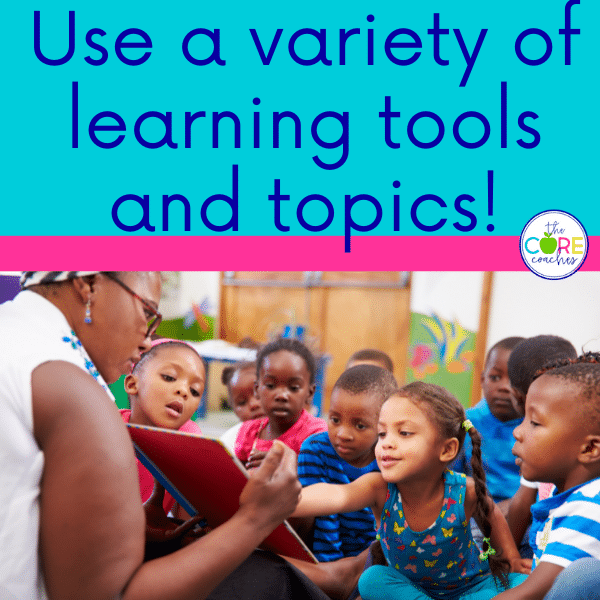
Listening Comprehension Activities
Listening comprehension is one of the most important places to begin when discussing comprehension skills. Effective listening skills are needed for almost all other comprehension activities.
Developing listening comprehension goes beyond the actual act of listening. It’s a combination of engaging students enough to listen and providing different ways for students to demonstrate what they heard.
To engage students in listening activities, students need to be interested enough to listen. Two effective ways to engage students in listening comprehension activities is to use a variety of learning tools and topics. In addition to listening engagement strategies, it is essential that you provide an immediate opportunity for students to respond to what they heard. This opportunity to respond helps to engage students in listening because they know they will be held accountable to share what they heard. It also provides you with quick insight into each students’ level of understanding.
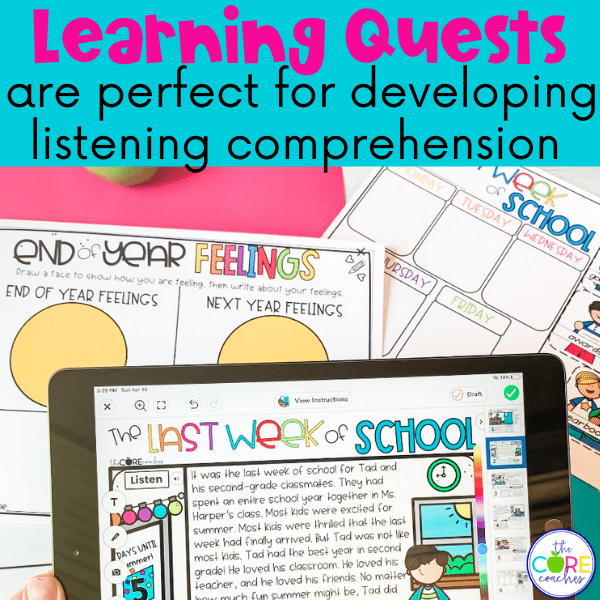
We developed our Learning Quests specifically with these key concepts in mind: variety of learning tools, variety of topics, immediate opportunities to respond.
- Variety of Learning Tools: Each Learning Quest includes recorded readings and videos
- Can you record yourself reading a text or find an instructional video to add variety in your classroom?
- Variety of Topics: Learning Quests cover a wide range of topics so that you can use learning quests several times throughout the year as comprehension activities, without students getting bored.
- What is an activity that you can teach students the procedures for and then repeat with new topics throughout the year?
- Immediate opportunities to respond: Every learning quest includes several different comprehension activities, such as moveable matching pieces, writing responses, and a quiz. Students must complete all of these as part of the listening activity. This requires them to listen closely to details.
- Do you have an assessment activity for students to complete immediately after listening?
Activities like Learning Quests are perfect for developing listening comprehension because they require students to practice the skills necessary for understanding spoken text, such as: focusing on details, assessing information, and responding to the speaker.
Listening is an important skill that can also help your students grow in their reading abilities.
Reading Comprehension Activities
One of the most fun parts of teaching elementary is the opportunity to read to your students. It was definitely one of our favorite things about teaching first and second grade! As much fun as the reading is itself, there is an important element of making sure students are comprehending what they are reading!
In early elementary school, a lot of reading comprehension activities are a response to a listening activity. This is again why taking time to focus on effective listening activities is important first.
A traditional reading activity in first and second grade is whole class read-alouds where the teacher reads to the students. Students need to be engaged so that they are listening closely to the book being read. Keeping students engaged during reading is closely tied to having an effective classroom management plan that focuses on student engagement and clear procedures.
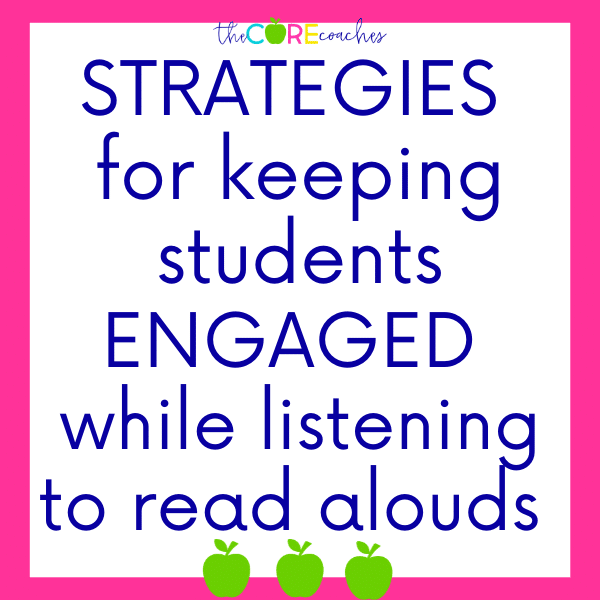
Here are a few of our favorite strategies for keeping students engaged while listening to your read.
- Have an anchor chart that poses a question about the book BEFORE you begin reading – this gives students something to think about while you read. You can also reference the anchor chart while reading to remind students of the question they are trying to answer.
- Give students opportunities to respond in non-verbal and verbal ways throughout the book. Use non-verbal check-ins like a “thumbs up/thumbs down” for basic yes/no predictions, or a verbal response where they turn to a partner and share a more specific prediction.
- Record yourself reading the book ahead of time or use a reading from YouTube. Prepare 3-5 comprehension questions ahead of time. Pause the recording and have students write down their responses on a whiteboard and hold them up to check.
Keeping students engaged during the actual reading will be the most difficult part of a read-aloud for many teachers. Using strategies for engagement, like the ideas above and even earlier in the listening activities, will help your students stay focused on what you are reading.
After completing the initial reading for a read-aloud, one of our favorite reading comprehension activities is to have students write about the story.
Writing Comprehension Activities
Writing activities are great ways for students to demonstrate their understanding from reading and listening activities! There are three different times during a lesson when writing can support listening comprehension and reading comprehension: before the lesson, during the lesson, and after the lesson.
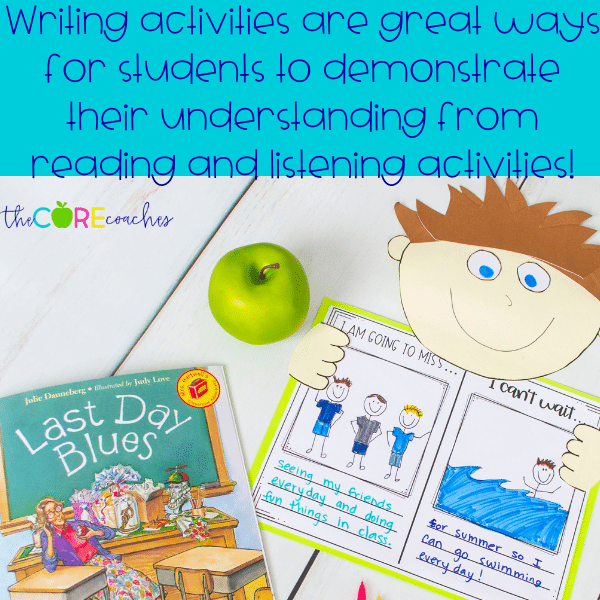
Consider using writing worksheets like graphic organizers to give students opportunities to write at these different times throughout a lesson.
KWL (know, want to know, learned) are a popular type of graphic organizer that covers all three parts of a lesson! In earlier grades, students may not have the writing skills to write full sentences yet. However, you can still use a graphic organizer to support writing: provide a chart that has sentence frames with blank spaces and have students only write one word at a time.
Give students quick opportunities to write during a lesson as well. This helps you as the teacher to immediately assess what students comprehend. It also maintains engagement. As part of an engagement strategy, this may look like having students write down the name of a character or write “yes” or “no” to a question while listening to a story. Text dependent questions are also great opportunities to respond. You can have students write responses to text dependent questions on a reading worksheet, or type them in a digital format.
While short answers are great writing practice to support engagement and comprehension during a reading or listening activity, longer writing assignments are great to use at the end as assessments. At the end of a lesson, students have more time to write and you can support them when the only focus is the writing activity. Writing comprehension activities will be long enough for students to demonstrate their understanding and skills pertaining to writing: spelling, sentence structure, and punctuation.
Writing activities are great to bring together listening and reading skills as well. A final written piece will require students to demonstrate their understanding of what they heard and read, through their writing skills. Keeping this in mind, create lesson plans that include all three comprehension skills.
Read-alouds are great for including all three skills! We also developed our Learning Quests to address all three of these skills. Checkout some of our examples of read-alouds and learning quests to get ideas on how to develop complete lessons that effectively address and assess all three major areas of comprehension.
If you’re looking for teaching ideas you may be interested in these blog posts such as:


